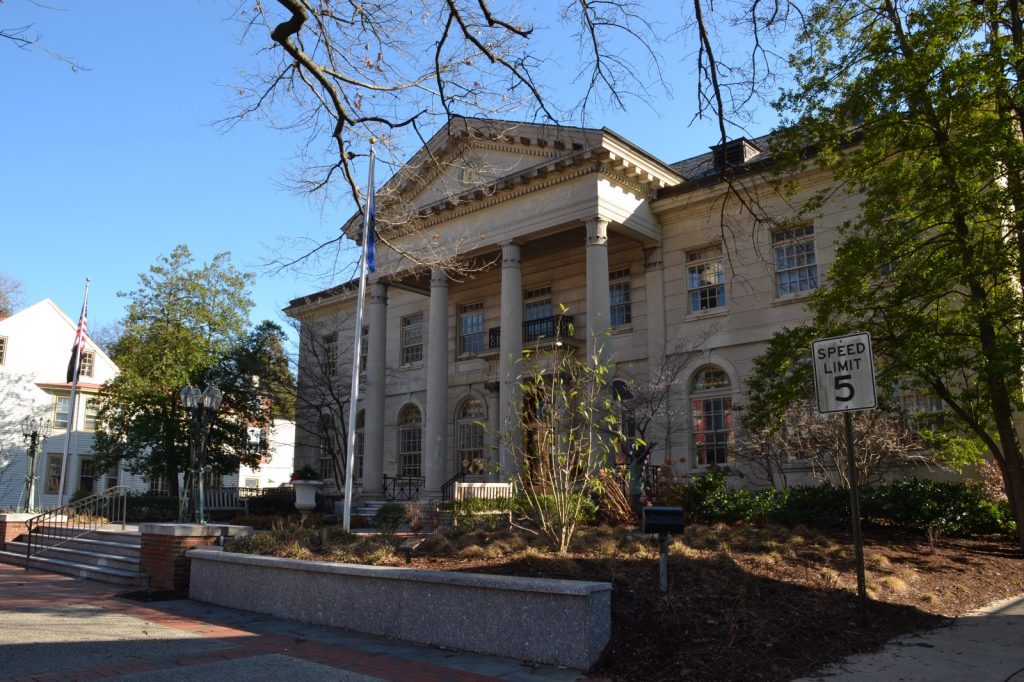
At a Sept. 27 hearing in Camden County Superior Court, Judge Nan Famular dismissed without prejudice to re-filing, a lawsuit brought against the borough by a group of citizens dubbed Haddonfield Encouraging Responsible Development (HERD) that challenged various actions and decisions of borough commissioners on the redevelopment of the Bancroft property.
As a result of the ruling, both parties have agreed to work on a slightly-altered plan, which will reduce the number of homes on the site, and prove to be more beneficial to the financial needs of the borough’s older residents.
Under the framework of an anticipated concord between the borough, developer J. Brian O’Neill and HERD, the Bancroft site will provide “age-restricted” housing for homeowners 55 and older, rather than the market-rate townhouses that the developer and the borough had planned.
In addition, the 80 townhouses originally proposed by commissioners on the lot are set to be reduced to 71. Ten homes geared toward those of low-to-moderate income are also expected to be included, as was the case in the original agreement. The new scope of the project is slated to increase the construction footprint to build the units, which are larger in size and longer in length than originally idealized.
The reconfigured agreement would also eliminate the originally-proposed 30 percent tax break offered to O’Neill, but it will retain the payment-in-lieu-of-taxes program. As a result, once the project is complete, Haddonfield is expected to receive a larger-than-normal share of Bancroft residents’ tax payments.
“This will give the community the opportunity for its seniors to downsize without the situation where folks may bring in new students to an already overcrowded section of town. When we filed our suit, the concern was the game plan for 80 ‘age-targeted’ units was not in the best interest of the community, and done without input from the community. And that’s why we had to take the bold step to sue our own community. Ultimately, I believe we achieved the best possible answer for Haddonfield’s short-range and long-range interests,” said Jack Tarditi, former borough mayor and one of the lawsuit plaintiffs.
“It was a long road, but I think we arrived at the right place. There are no winners and losers here. Everyone has given a little and gotten a little.”
Tarditi praised O’Neill for listening to HERD’s advocacy for the age-restricted designation, and to borough commissioners for the flexibility in adjusting their once-firm approach to redevelopment of the site.
Original plans for the Bancroft parcel, approved by Haddonfield’s three-man governing body earlier this year, called for up to 80 “age-targeted” units on the land, opening up the possibility of younger families with multiple children to occupy the units alongside older residents looking to transition to smaller dwellings.
Commissioners also initially approved a plan to include a payment-in-lieu-of-taxes program, which would have given a tax break to anyone who purchased a townhome on the Bancroft lot.
However, due to pressure from the board of education regarding the tax structure of the plan, as well as consistent outcry from borough residents concerned about traffic volume and the potential for overcrowded schools, commissioners elected in late April to scrap the plan as presented, and re-introduce a better, more beneficial ordinance at a later time.
“I am happy that this lawsuit is out of the way and we can finally proceed with our plans for the Bancroft property,” stated Commissioner Jeffrey Kasko, who led the original negotiations with O’Neill when he was mayor.
“We have an updated, agreed to conceptual plan and I am hopeful that we can complete work on that in the coming months so that there are no more delays, expenses, or uncertainties for the taxpayers of Haddonfield.”
Kasko told The Sun on Oct. 1 that the main focus of Bancroft efforts going forward will be the commissioners’ involvement with development, engineering and design of the lot. Once all sides have been satisfied, the commissioners must involve the planning board to get its necessary approvals. He estimated that at least six months of back-and-forth would be required between all parties before the plan comes up for approval once more.









